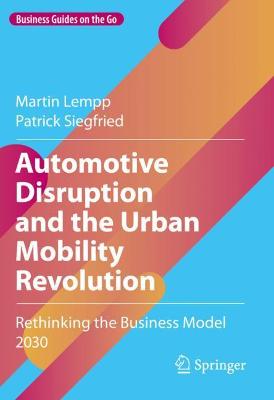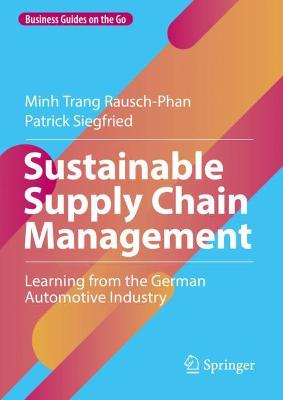Business Guides on the Go
2 total works
Automotive Disruption and the Urban Mobility Revolution
by Martin Lempp and Patrick Siegfried
The authors provide a comprehensive analysis of the automotive industry, including prevailing business models of OEMs and 'tier-n' automotive suppliers, the competitive environment they are embedded in as well as socio-economic changes affecting future market conditions. Subsequently, elements of the automotive disruption are presented; these enable the provision of novel urban mobility concepts and offer a new source for additional services accompanying the user. A comprehensive insight into consumer behavior, potential automotive business models which can be sustained by 2030, smart city models, transformation strategies, and diverse marketpenetration scenarios are also provided in the book. It also outlines the challenges and key actions that shape the automotive sector even beyond 2030 as well as knock-on effects across different industries arising from the technological and economic changes in the automotive market are projected.
Sustainable Supply Chain Management
by Minh Trang Rausch-Phan and Patrick Siegfried
This book presents the current causes and effects of implementing sustainable supply chain management (SSCM) as well as green supply chain management (GSCM) strategies in the automotive industry. The reader is provided a detailed scientific review on SSCM and GSCM and presented the advantages of sustainable development concepts as well as factors causing the implementation of SSCM such as buyers’ behavior, governmental regulations, and competitiveness. The book then analyses the current situation of SSCM development, particularly in the automotive industry. It shows challenges, barriers, successes, and benefits that automotive companies obtain from implementing GSCM. Through case studies on leading German car manufacturers VW, BMW, and Daimler, the necessary activities of these companies to implement green development in the entire supply chain, including green supplier selection, green materials, green transportation, and reverse logistics, are defined. Moreover, a benchmark with companies from Asian markets such as Toyota from Japan and Geely from China is performed.

